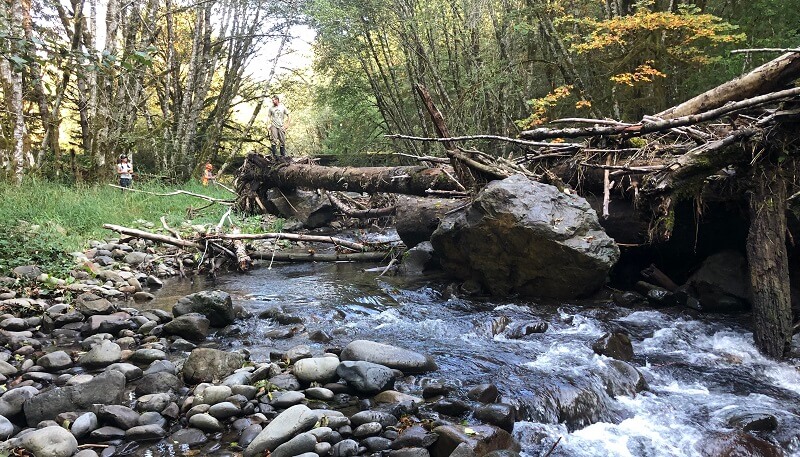Focused Investment Strategy for Habitat
Considerable effort has occurred over the last two decades to address past and ongoing losses of salmon and steelhead habitat. The FISH project seeks to improve effectiveness of habitat investments by incorporating considerations relating to climate chnage, recovery progress, land use, fish passage improvements, hatchery and harvest impacts, and other factors.
Reach out to .(JavaScript must be enabled to view this email address) if you have questions about the project or would like to be notified about public outreach opportunities.
FISH Process
- Step 1: Identify Candidate Populations
In Process
Candidate salmon and steelhead populations were initially identified in spring 2024 based on recovery designations, viability status and all-impact reduction progress. Candidate populations fall into two categories:
- Stronghold Candidates: populations with high or very high viability that are identified for protection through conservation measures and habitat improvements with the goal of maintaining viability and increasing resiliency.
- Stronghold Expansion Candidates: populations with limited viability that are identified for restoration and protection through conservation and restoration measures with the goal of improving viability and supporting the regional recovery scenario.
- Step 2: Assess Watershed Conditions
In Process
Watershed processes and conditions are being assessed at landscape and riparian scales to identify current conditions, land use risk, and climate resiliency ratings. This information will be used to identify focal watersheds for future habitat investments. Focal watersheds will:
- Support candidate salmon and steelhead populations
- Have relatively functioning conditions, supportive land use patterns, and opportunities to promote climate resiliency
- Step 3: Identify Focal Watersheds and Habitat Actions
Starting Spring 2025
We will be reaching out to land use program and habitat project sponsors to identify potential alignment between existing programs, strategies and projects and initial focal watersheds from step 2. Existing work will be leveraged and integrated into FISH to ensure past investments are supported and leveraged where alignments are identified.
Results from Step 2 will also inform the identification of new habitat actions in focal watersheds. Four types of habitat actions are planned:
- Land Use Coordination Actions: opportunities to engage with land use planners and managers to ensure salmon and steelhead needs are incorporated into relevant programs.
- Protection Actions: opportunities to conserve at risk habitat when land use coordination actions are unlikely to maintain current conditions.
- Reconnection Actions: opportunities to reconnect floodplain, off-channel and upstream passage to expand the distribution of salmon and steelhead and improve habitat diversity and watershed processes.
- Restoration Actions: opportunities to enhance and improve riparian, floodplain and river channel conditions where land use programs are anticipated to support investments.
- Step 4: Develop Implementation Approaches
Starting Summer 2025
We will be reaching out to land use program and habitat project sponsors to identify capacity and resource constraints to implementing high priority FISH habitat actions in focal watersheds. Implementation resources will be developed, including:
- New Salmon Recovery Funding Board guidance materials
- New Salmon Resource Map data layers, including focal watersheds and habitat actions
Our goal is to implement FISH project results as part of the 2026 Salmon Recovery Funding Board grant round.

An instream fish habitat project including large woody debris and boulders, implemented by the Lower Columbia Fish Enhancement Group. Photo by Steve West LCFRB
